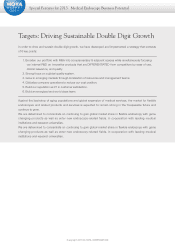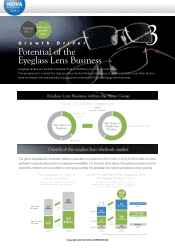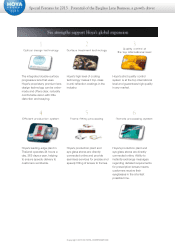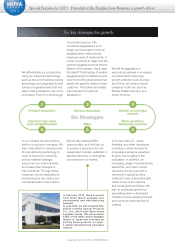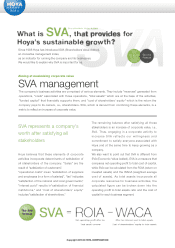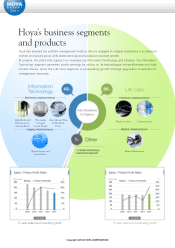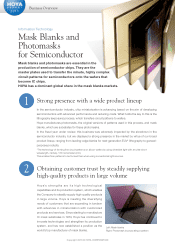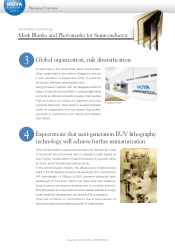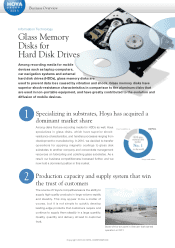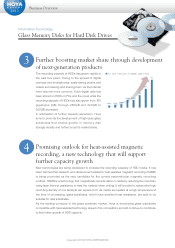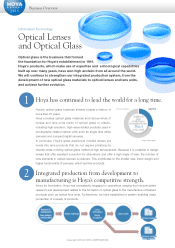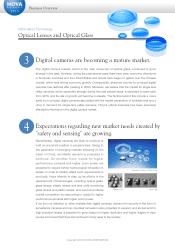Pentax 2013 Annual Report Download - page 27
Download and view the complete annual report
Please find page 27 of the 2013 Pentax annual report below. You can navigate through the pages in the report by either clicking on the pages listed below, or by using the keyword search tool below to find specific information within the annual report.
Special Features for 2013 What is SVA, that provides for Hoya's sustainable growth?
Copyright 2013 © HOYA CORPORATION
Discounted increase of a
corporate value of a single year
= Corporate value
In the long corporate history of Hoya, we once
generated net loss and was temporarily under control
of a bank. That was back in 1967. Five years after,
the bitter experience triggered us to adopt cash flow
management. Since then, we have upgraded our
major management measure from ordinary profit to
ROE in 1994, and further to SVA in 1997. ROE is an
effective tool to check the efficiency of shareholders'
equity, but as more debt can also generate more
income, the shareholders' equity ratio (or leverage)
needs to be counted.
Rather, we decided to adopt SVA, which is intended
to show the amount of increase or decrease of
c o rpor a te valu e . A re l a tive l y n e w c o n c e pt
incorporated in SVA was the "cost of shareholders'
equity." Historically, the Japanese accounting rules
had used the term "own capital," literally reflecting
the general idea that reserves, retained earnings, and
the like are the company's cost-free funds and have
no funding costs. SVA, however, is different. It is
based on the view that reserves and retained
earnings are part of shareholders' equity, which
incurs a cost, in the form of the expected return of
shareholders. Hence, the amount of net profit minus
expected return (cost) ends up to be an increase in
corporate value.




